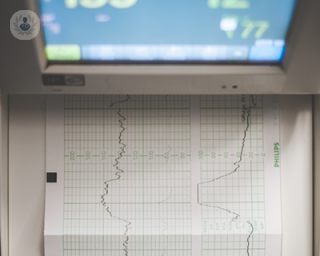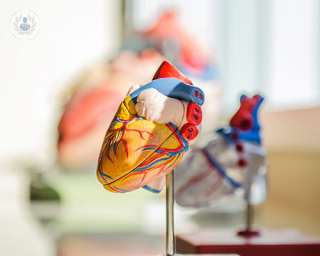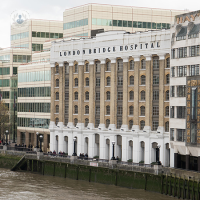Electrophysiology study
Dr Syed Afzal Sohaib - Cardiology
Created on: 10-21-2015
Updated on: 08-08-2023
Edited by: Aoife Maguire
What is it?
An intracardiac electrogram is an exam that tests the heart’s electrical system function, in order to see whether there is any arrhythmia.

What does it involve?
This test is considered an invasive one and is carried out under local anaesthetic.
During the procedure, the doctor will insert electric cables into the chest, which will start sending periodical electric stimuli to the heart. These stimuli will cause small, induced arrhythmias and the leads will record the effects of the arrhythmias. After the procedure, you will be kept under clinical observation and your heart’s activity will be monitored through an ECG.
What is it for?
An intracardiac electrogram evaluates the functioning of the heart’s electrical system. However, it may also be used to investigate the origins of tachycardia or any other cardiac disorders, such as syncope (or temporary loss of consciousness), collapse (fainting) and palpitations (perceived heartbeat irregularity).
How can you prepare for it?
You may be advised by your cardiologist not to eat anything before the procedure and you might need to stay in hospital overnight afterwards. After that, you will be able to go back to your normal routine.
What does it feel like during the procedure?
Since the test is carried out under local anaesthetic, the only discomfort you may feel may be due to the induced electric stimuli.
It is very rare for complications to arise after this exam, however in 1% of the cases these complications are of vascular and cardiac nature. In case of vascular complications, the valves the leads pass through may be damaged. This may cause conditions such as venous thrombosis, haematoma and arteriovenous fistulae.
Cardiac complications may include haemorrhagic pericardial effusion (which can be easily treated with a chest drain) or malignant ventricular arrhythmia (which can be treated with electric cardioversion).
This is why a hospital stay after the procedure is important – the medical team can monitor you closely and treat any complications that occur.
What would a “bad” result mean?
An abnormal result may mean that you have a heart rhythm disorder. There are many types of heart rhythm disorder, but most can be treated in a number of ways – including medication, radiofrequency ablation, or the fitting of an artificial pacemaker.













